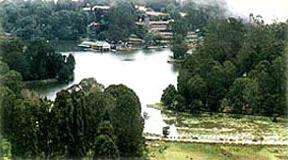Jan 06, 2026
Jan 06, 2026
The global environment however, is still battling with the danger of climatic changes like global warming, increase in the water level (which could potentially finish island countries like Maldives). The third world, forever trailing behind the fads of the first world countries, have only now begun to focus on the need for building environmental concerns into development plans. One of India’s largest problems is the over-exploitation of our natural resources including water, forest, clean air and healthy soil. And we would also suffer the consequence of global warming and climate change, even though we didn’t do much to cause it. We need to define and pursue a totally different path of development that enables us to protect and preserve our natural resources. Save Kodaikanal from sinking into garbage Welcome to Kodaikanal but do not leave behind a mountain of plastic waste Going around the lake on bicycles and walking around is fun but filling it up with empty soft drink cans and plastic bottles is unwarranted Enjoy the lake with sugar candy but do not throw the plastic packet into the waters Take a hard ride on a pony but beware the horses contribute 300 kg of manure a day to the lake waters!! Stay in a hotel that is not in the Lake Watershed and doesn't pollute it. Wherever you stay, ask if the lodge is treating its solid and liquid wastes!!! Question the source of water that you get at your hotel - make sure it is not from the lake - it is too polluted for human use. This is not a dumping yard for your food packets. And the message has worked. One of the most confounding questions facing the third world countries in the face is, whether there is a conflict between environmental protection and development. With industrial revolution, people lost sight of the environmental issues, and concentrated on developmental issues only. No thought was given to the fact that more and more goods and services would likely harm the environment. The true implications of damage to the environment became a focus of the industrial world only in the 1950s and 1960s. Even though this resulted in an unprecedented effort in protecting the local environment in the countries of the northern hemisphere.
One of the most confounding questions facing the third world countries in the face is, whether there is a conflict between environmental protection and development. With industrial revolution, people lost sight of the environmental issues, and concentrated on developmental issues only. No thought was given to the fact that more and more goods and services would likely harm the environment. The true implications of damage to the environment became a focus of the industrial world only in the 1950s and 1960s. Even though this resulted in an unprecedented effort in protecting the local environment in the countries of the northern hemisphere.
There are several factors that impact on the quality of the environment. The rise of environmental movements is a healthy trend, as it sensitizes people on the dangers in specific actions and projects. But environmental movements need to take a balanced and enlightened approach, which does not make an enemy of all developmental activities. Next, environmental awareness would also have a major effect on the quality of human life.
Indeed, one of the major reasons for poverty lies in the depletion of natural resources and the degradation of the environment. It is only through good quality air, water and other natural resources that the quality of human life can improve. The first step in bringing about change is the creation of adequate awareness in this field.
Green technologies would have a profound effect on human life in the 21st century. It is technological options that would provide human society with the means to consume goods and services and enjoy a standard of living in keeping with universal aspirations while not damaging the environment.
Several examples of this trend are in evidence all over the world today. For instance major cities in the developed world do not have unacceptable levels of air pollution, largely because automobile and fuel technology has changed substantially. But green technologies also respond to market signals and regulatory measures. This is where forward-looking policies and institutional change becomes an important determinant of how technologies will be developed and used in future. But the real change, like charity would have to begin at home. Unless there is a consistent mass movement towards an anti-pollution drive that catches every person’s imagination, the Green technologies are not going to go a long way. One of the projects that has caught on with local grass root efforts is the “Save the Hill” project in Kodaikanal.
Kodaikanal - One of the most beautiful Hill Towns in India is situated in the Palni Hills. It is an important eco-tourist spot but at the same time threatened by two potential issues - the deforestation of the hills, and the Pollution by tourists.
The maintenance council of the tourist spot has recently begun a Volunteer Quality Monitoring program for educating School Students of Kodaikanal about cleaning up this once beautiful hill resort. The methods are simple. The students have posted placards, and sport t-shirts carrying the messages:
Another few-years’ old project in India that has begun to gather momentum is “Adopt a tree”. Initially favored by the corporate sector as a possible advertising gimmick, because the “environmental label” was really catching on, has turned into a mass movement. Children have begun adopting plants and trees on roadsides as their own, and taking the responsibility for watering them and their upkeep.
Hopefully, this would transform into a strong movement where children and adults alike will join-in. One tree for each resident of each city and town would ensure quality air, decrease dust and heat and would contribute to a greener looking city. And green is beautiful, right?
29-Jun-2000
More by : Deepika Singh